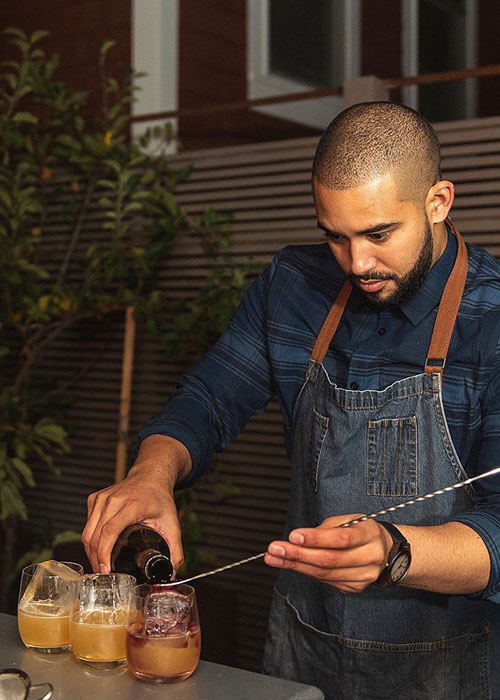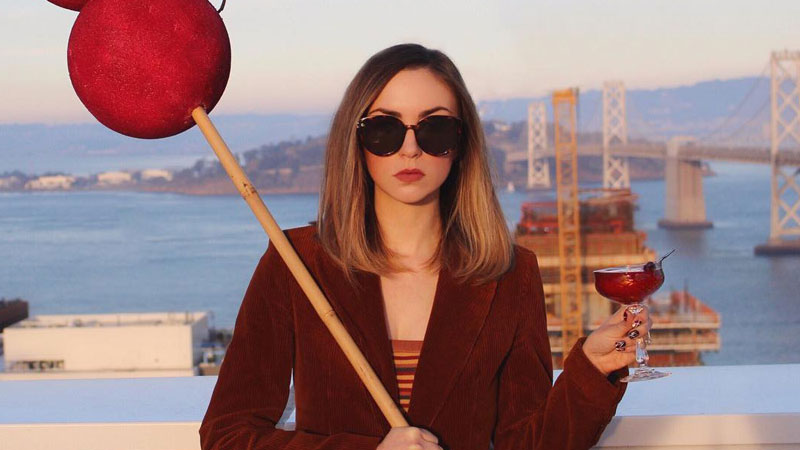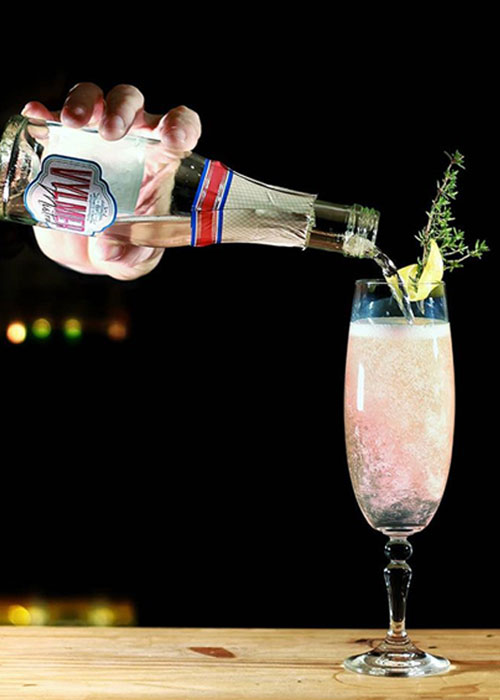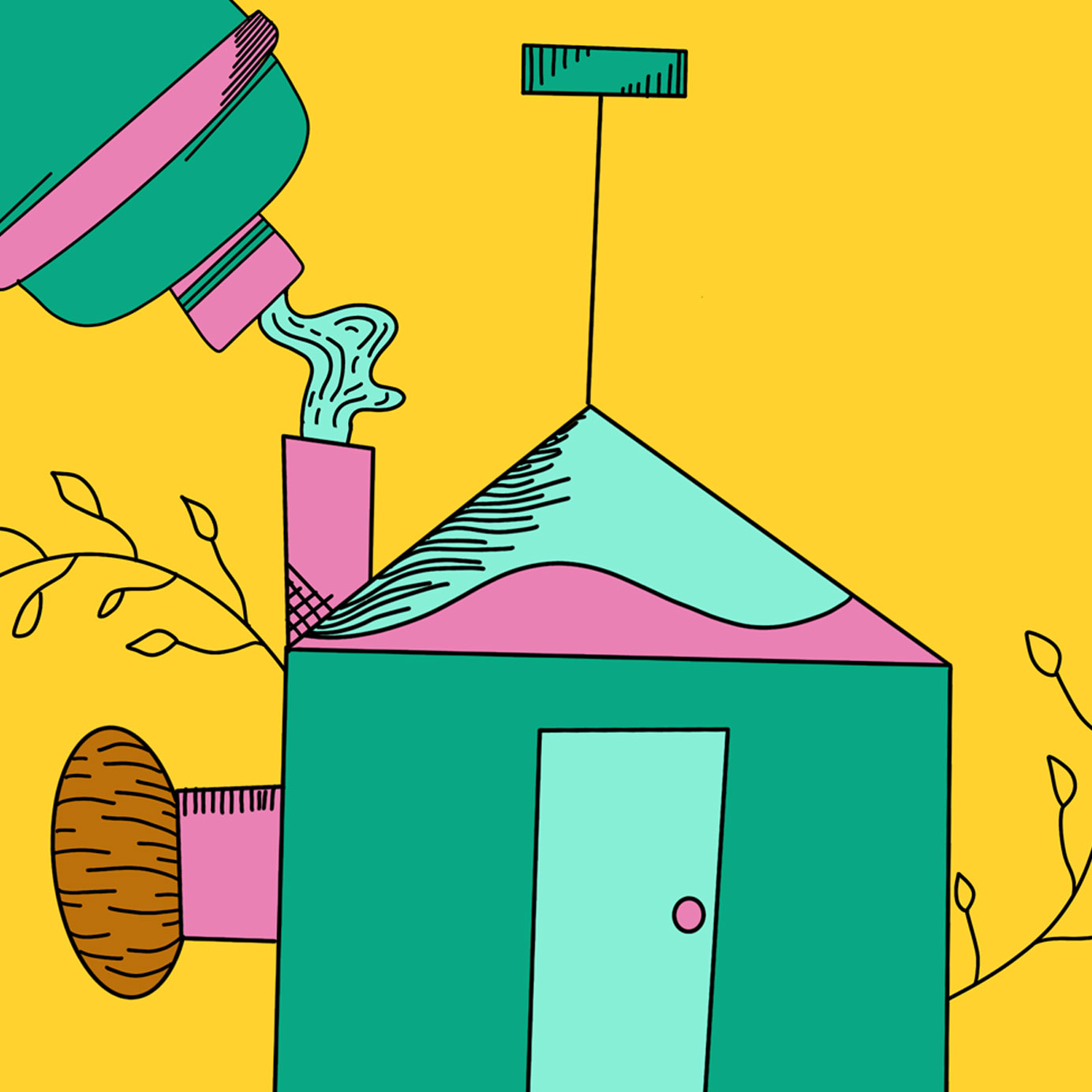
Every cocktail enthusiast dreams of having a beautifully stocked private bar where they can make tasty drinks without having to leave the comfort of their home (or, say, put on shoes).
Stocking the perfect home bar is challenging, though. In the long run it is less expensive to drink at home, but the process can seem overwhelmingly pricey if you don’t know where to begin. And so we asked some of Instagram’s best home bartenders for their recommendations on getting started.
“Depending on where you live, a start-up investment of $200 to $300 can get you set up with a good variety of bottles (spirits, bitters, liqueurs), and the essential tools needed to craft a damn good drink,” Elliott Clark says. One of the industry’s most successful drinks-focused influencers, Clark goes by Apartment Bartender on Instagram.
Often referred to as “drinkstagrammers,” these digital experts post photos of original cocktails, favorite spirits, industry news and events, and educational advice. Sometimes, they get paid by brands to promote products, but it’s easy to spot a paid post. Look for hashtags #ad or #sponsored in the caption, and for conspicuously branded swag in the shot.
Ready to dive in? We asked top drinkstagrammers for their advice, and distilled this guide into four sections: booze, mixers, tools, and pro tips.

Booze
When buying booze, it’s best to think about it in two separate categories: base spirits and modifiers. The former is your whiskeys, tequilas, gins, rums, vodka, etc. Modifiers are liqueurs, amari, aperitifs, fortified wines, and so on.
“Mixing your quality base spirit with below-average liqueurs will always result in lower-quality drinks — this was my biggest mistake when I started,” Matthias Soberon, who goes by the alias Served by Soberon, says.
Start by purchasing the base spirits you think you will use the most, based on your drink preferences. If you’re a diehard Negroni drinker, you know you’ll need gin. Love Margaritas? Tequila should be your first purchase.
Home bartender Jordan Hughes, a VinePair columnist whose Instagram handle is High-Proof Preacher, recommends Pueblo Viejo Blanco Tequila ($20), an affordable tequila that will make you a quality house “Marg.” Are you into smoky flavors? Pick yourself up some Montelobos Mezcal ($35), or Peloton de la Muerte ($39.99).
“If you’ve got enough in your [home] bar to make Manhattans and Martinis, you’re in good shape,” says Hannah Chamberlain, a.k.a Spirited LA. “That means whiskey (Wild Turkey 101 bourbon is a nice, budget-friendly option widely available for $23; gin (Beefeater for something lower priced, or St. George Terroir if you’re feeling fancy); sweet and dry vermouth; and some bitters (Angostura is a nice, traditional choice, but feel free to get creative here).”
Modifiers are a vast category, so start by picking up the essentials for the classics. Hughes’ favorite low-proof bottles are Luxardo Maraschino liqueur ($30), Green Chartreuse ($54.99), Campari ($32), and Aperol ($23).
Other quality base spirits with good value include Plantation 3 Stars White Rum ($24.99) and Milagro Silver Tequila ($22.99). You might also consider modifiers like Cointreau ($35), Pierre Ferrand 1840 Cognac ($45), and Amaro Montenegro ($30).

Mixers
If you talk to older generations of drinkers, many express negative feelings about tonic water. They think of it as overly sweet and artificial-tasting, but that’s no longer the case. Modern mixer brands remove unhealthy ingredients like high-fructose corn syrup and other additives. For any drink needing carbonation, such as those involving ginger beer, soda water, ginger ale, or tonic water, Fever-Tree and Q Drinks should be your go-to brands.
For classic sours, like Daiquiris, Margaritas, and Sidecars, you will need freshly squeezed citrus, plus sweeteners for balance. You can make most of your sweeteners or syrups at home, but, in the words of Ina Garten, store-bought is also fine.
“One of my favorites is RAFT, who make fantastic syrups and bitters with real fruit, spices, and other quality ingredients,” Hughes says. Other favorite mixers and syrups include Portland Syrups and BG Reynolds; the latter makes “the best tiki ingredients,” Hughes says.
Tools
There are plenty of gadgets out there, but you only need a few to get started.
“My everyday go-to tools are a shaker, mixing glass, bar spoon, Hawthorne strainer, fine strainer, and jigger,” says Natalie Migliarini, a drinks influencer, home bartender, and VinePair columnist whose Instagram handle is Beautiful Booze. She recommends the Boston Makara Shaker Set from Sertodo Copper, and the Canterbury jiggers and bar spoons from Viski.
Lastly, and perhaps most importantly, you will need ice molds to make cocktail-worthy ice. Ask any bartender and they will agree: Ice is life. Using smelly, stale, freezer ice will ruin every drink you make. True Cubes are the way to go if you can swing them, otherwise, try Cocktail Kingdom. If you want to take a stab at making your own cocktail-worthy ice, check out Clark’s informative video, “How to Make Clear Ice.”

Pro Tips
Don’t sleep on the importance of education and technique. As with most crafts, your bartending skills will improve over time with practice and dedication.
“I first started experimenting with ingredients that I already had at home and really centered on the less-is-more concept,” Migliarini says. “Over time, I have refined my method and the cocktails that I make, but it’s only been through constant learning and experimenting that has helped me elevate my cocktails at home.”
Soberon agrees, and points out the myriad resources available to aspiring home bartenders. “Watch movies on YouTube, listen to podcasts while on the road, read cocktail literature, practice techniques, order drinks in bars, and ask bartenders questions — if they’re not in the middle of an incredibly busy shift,” he says. The cocktail world has never been more accessible, and experts are happy to help those curious about their craft.
“Invite. People. Over,” Hughes says. “Don’t worry about becoming a master mixologist before you start making drinks for people. Your friends will be impressed that you’re putting time and effort into making them something.”
Bringing people together over a few carefully (or sloppily!) made drinks is what being a home bartender is all about. Your friends care more about having a good time than whether your Manhattan was appropriately garnished.
Finally, Chamberlain offers one word of advice applicable to anyone in the drinks business: “Pedialyte.”
